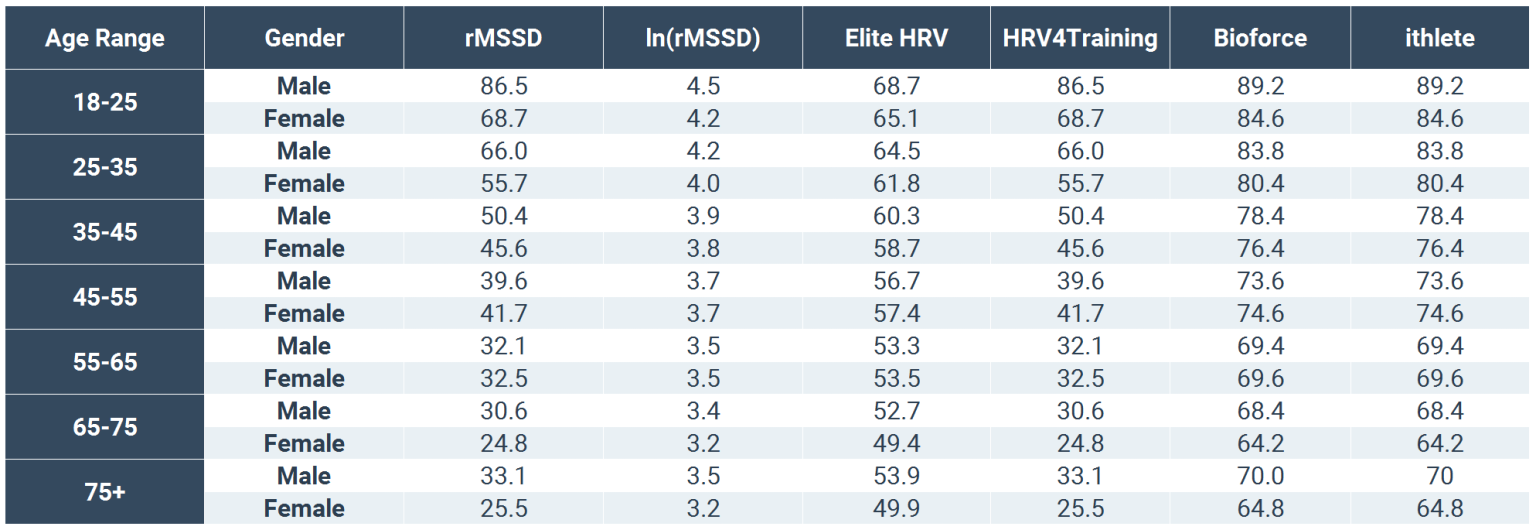Heart rate monitoring is one of the most popular methods of load monitoring in sports. The (live) heart rate of players gives an excellent overview of the recovery of players during exercises and/or matches. But what about the recovery of players outside of training and matches? How does a player recover the next day after training? Is he/she tired or stressed and can this be measured objectively rather than with a subjective questionnaire (RPE)? By measuring the heart rate variability (HRV) of players, we can provide an answer to this and better map the capacity of players.
What exactly is heart rate variability?
Heart rate variability (HRV) indicates the variation of your heart rate between successive heartbeats. This gives a certain measure of the condition of your autonomic nervous system. The autonomic nervous system automatically regulates all unconscious processes in the body, such as breathing, digestion, blood pressure, energy production and also influences the heart rate. A high heart rate variability indicates that a player has good stress tolerance and is recovering well physically. Low heart rate variability can be an indication of illness, stress or poor physical recovery.
Why is the heart rate variable?
The autonomic nervous system consists of the sympathetic nervous system and the parasympathetic nervous system. In practice, this is sometimes explained as the accelerator pedal (sympathetic) and the brake pedal (parasympathetic) of the body.
The sympathetic nervous system is the part that controls the body so that it can provide activity (increased heart rate, breathing, and blood pressure) and expends energy. The parasympathetic nervous system is active during your body’s recovery. Heart rate, respiration, and blood pressure decrease when the parasympathetic nervous system is more active.
If the variation in the heart rate is high, it means that there is a good balance between both nervous systems in the body. The heart then responds well to stimuli. In the event of physical fatigue, stress, or illness, the heart does not respond well to stimuli, whereby the heart rate variability is low.
How do you determine heart rate variability?
Heart rate variability is the time between heartbeats. This is also called the R-R interval. If you normally have a heart rate of 60 beats per minute during a rest period, then it is almost never the case that the heart beats exactly every second. This can differ by a millisecond per beat, where the interval within this minute can be, for example, 0.88 seconds and 1.12 seconds. This can be measured by an ECG, where each heartbeat shows the pattern of the QRS complex (see figure below). The HRV is calculated by taking the square root of the mean square of the differences in the R-R intervals. The number that comes out of this is called the RMSSD.
When and how often do you measure HRV?
Heart rate variability is best measured before a workout (30-15 min before a workout) in a lying position and upon waking up the next day. It is important to consistently monitor the heart rate of the players for at least 2 minutes. In JOHAN’s live app you can then immediately view an HRV overview and view the physical recovery per player.
What affects heart rate variability?
Heart rate variability is a parameter that is very variable, both between players and between different days of the week. It is therefore important to measure HRV consistently over a longer period (at least 4 weeks) for a complete overview. There are several factors that affect players’ HRV values. Some factors can be influenced and others are genetically determined.
Players’ HRV values depend on the following factors:

Norm values HRV
According to a study by Elite HRV with 24,000 participants, 75% of HRV values fell between 46.3 and 72 on a scale of 0-100. Below is an overview of the HRV values of men and women:

Heart rate variability in relation to training load athletes often have a higher HRV value than semi-professional athletes. This is mainly because athletes are exposed to high training loads on a weekly basis.
Heart rate variability in relation to training load
You can use the heart rate variability in practice to adjust the training load where necessary. In a study by Sean Williams, heart rate variability was measured in combination with the A/C Ratio. This showed that when players had a low HRV, the risk of injury was greater with an increased A/C Ratio. This while players with an average or high HRV could handle an increased A/C Ratio. It is therefore important not to increase the training load in players with a low HRV.
In addition, you can also use the HRV to detect any illness. As the training load increases, so do the body’s recovery requirements, especially the need for sleep and good quality nutrition. When training load and recovery demands are not balanced, inflammation in the body becomes chronic. This stresses the immune system and tries to repair too many parts of the body at once and makes the body less immune to viruses and bacteria. In players with a low HRV, the sympathetic nervous system and the parasympathetic nervous system are not in balance and are therefore more susceptible to viruses and bacteria.
JOHAN's advice
The heart rate variability gives a good objective picture of the physical fitness of players. Measuring HRV is therefore important to see whether players are ready for the planned training (and associated load) and to gain insight into the recovery after training and matches. To measure this, one should take a measurement (lying down) of at least 2 minutes every day 30-15 minutes before training and the next morning also a measurement of 2 minutes (lying down). Normally this is monitored using questionnaires (RPE), but this is only subjective. The HRV measurement is an objective way of measuring recovery capacity and the questionnaires are an excellent addition to this.
